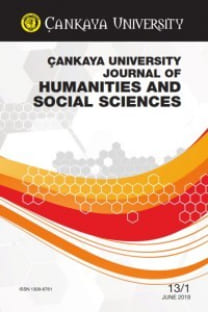Victorian Scripts, Nostalgic Traces and Romance in Michèle Roberts’ Fiction
Victorian, Romance, Michèle Roberts
Victorian Scripts, Nostalgic Traces and Romance in Michèle Roberts’ Fiction
Michèle Roberts, Victorian, Romance,
___
- Boyd, Kelly and Rohan McWilliams (eds), The Victorian Studies Reader (London: Routledge, 2007). Cain, Ruth, “The Buried Madonna: Matricide, Maternal Power and the Novels of Michèle Roberts,” Women Studies: An Interdisciplinary Journal, 42/4 (2013), pp.408-438. Gilmour, Robin, “Using the Victorians: The Victorian Age in Contemporary Fiction,” in Alice Jenkins and Juliet John (eds.), Rereading Victorian Fiction (New York: Palgrave, 2000), pp.189-200. AYL‹N AT‹LLA Hadley, Louisa, Neo-Victorian Fiction and Historical Narrative: The Victorians and Us (New York: Palgrave Macmillan, 2010). Heilmann, Ann and Mark Llewellyn, Neo-Victorianism: The Victorians in the Twenty-First Century, 1990-2000 (New York: Palgrave Macmillan, 2010). Jenkins, Alice and Juliet John (eds.), Rereading Victorian Fiction (New York: Palgrave, 2000). Kaplan, Cora, Victoriana: Histories, Fictions, Criticism (New York: University of Columbia Press, 2007). King, Jeanette, The Victorian Woman Question in Contemporary Feminist Fiction (New York: Palgrave Macmillan, 2005). Newman, Jenny, “Interview with Michèle Roberts,” in Sharon Monteith, Jenny Newman and Pat Wheeler (eds), Contemporary British and Irish Fiction (New York: Arnold, 2004), pp.119-134. Parker, Emma, “Sex Changes: The Politics of Pleasure in the Novels of Michèle Roberts,” Literature Interpretation Theory, 17 (London: Routledge, 2006), pp.223-241. Parker, Emma, “Michèle Roberts and Romance,” Women: A Cultural Review, 19/1 (London: Routledge, 2008), pp.21-36. Roberts, Michèle, In the Red Kitchen (London: Minerva,1991). Roberts, Michèle, The Looking Glass (New York: Henry Holt and Company, 2000). Roberts, Michèle, The Mistressclass (New York: Henry Holt and Company, 2003). Roberts, Michèle, Reader, I Married Him (London: Little Brown, 2004). Rowland, Susan, “Women, Spiritualism and Depth Psychology in Michèle Roberts’s Victorian Novel,” in Alice Jenkins and Juliet John (eds.). Rereading Victorian Fiction (New York: Palgrave, 2000), pp.201-214.
- ISSN: 1309-6761
- Yayın Aralığı: Yılda 2 Sayı
- Başlangıç: 2004
- Yayıncı: Çankaya Üniversitesi
TAMAR SHARON, Human Nature in an Age of Biotechnology: The Case for Mediated Posthumanism
JEFFREY BISHOP, The Anticipatory Corpse: Medicine, Power, and the Care of the Dying
Kehinde: Floundering between Two Opposite Worlds
Rationalization in Weber and Habermas: A Comparative Perspective on a Macrosociological Concept
William Blake and William Wordsworth’s Reactions to the Industrial Revolution
Images of Children in Ian McEwan’s The Cement Garden and William Golding’s Lord of the Flies
Victorian Scripts, Nostalgic Traces and Romance in Michèle Roberts’ Fiction
Sosyal Demokrasinin ‹skandinavya’daki ‹zdüflümü: Ak›nc› Vikinglerden Uzlafl› Kültürüne Geçifl
The Anticipatory Corpse: Medicine, Power, and the Care of the Dying
Türklerin Etnik Kökenleri, Anadolu’nun “Türk”leşmesi ve Türk Ulusal Kimliğinin Oluşumu
